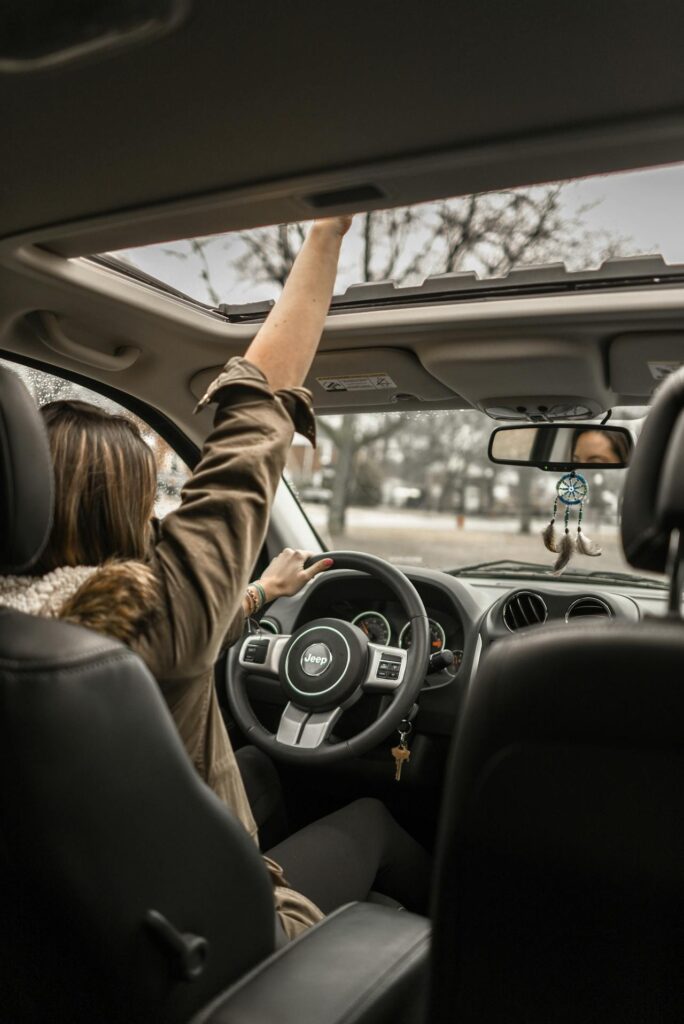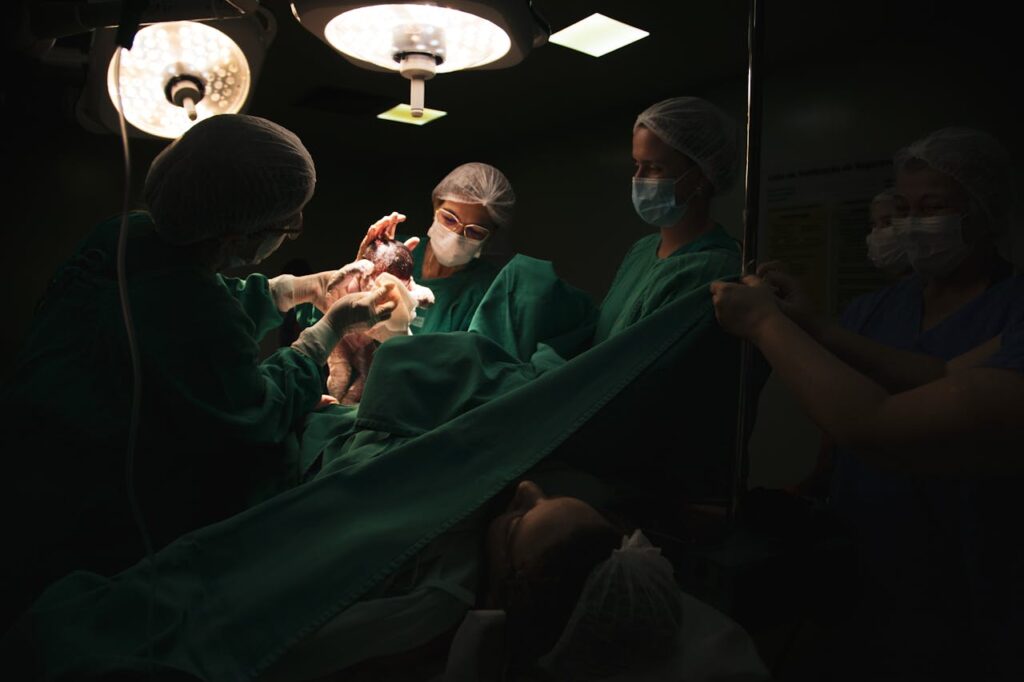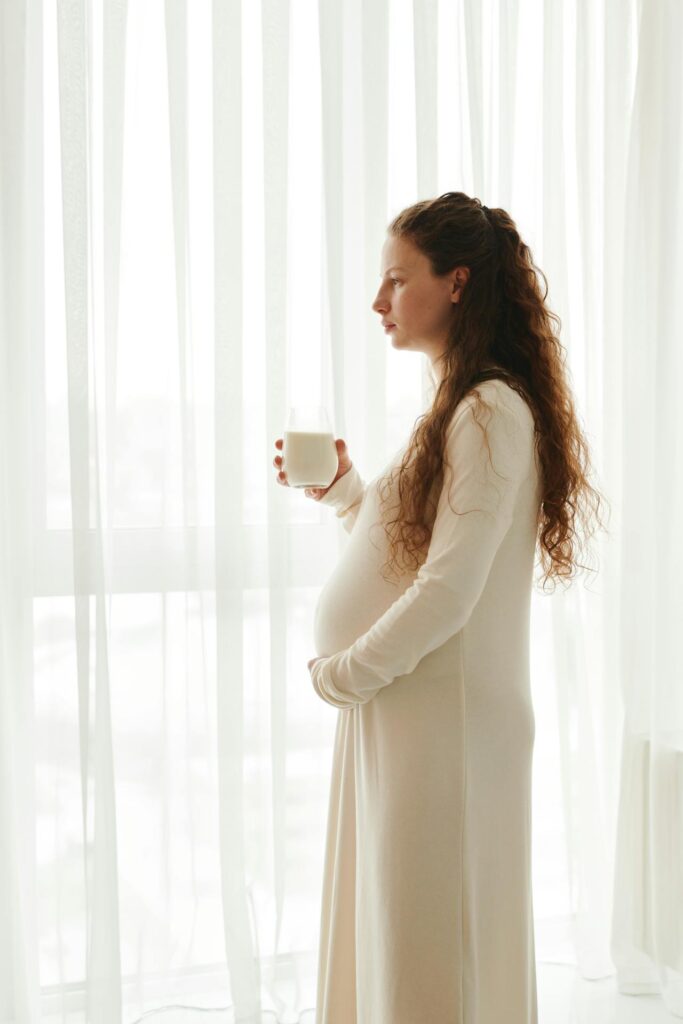
Join 130k subscribers and get the best of the week, straight to your inbox.
Among many concerns new moms have, one is: “How long after giving birth can you drive?” It’s a legit worry when you’re recovering and caring for the baby.
Since you want to get back to some sense of normalcy, you want to know about how long do moms take a break from driving postpartum. Whether it’s for running errands, appointments, or getting fresh air, knowing when it’s safe to drive again is important.
But the answer depends on several factors, like the delivery you had (vaginal or C-section), your pain levels, and how well your body is healing. Interestingly, some women feel ready to drive within a week or two while others may need more time, and both scenarios are perfectly normal.
Of course, your doctor’s advice is the most important before you get behind the wheel, but having a general idea of what to expect can help you plan. Let’s talk about what you need to consider before you resume driving, so you can make the best decision for yourself and your little one.
Why is Driving After Birth a Concern?

Driving after childbirth isn’t as simple as hopping back into the car and hitting the road. Your body has been through a lot, and it needs time to recover—whether you had a vaginal delivery or a C-section. You’re healing, possibly dealing with stitches or soreness, and your energy levels are likely running on empty. Add in the fact that you’re adjusting to life with a newborn, and it’s easy to see why driving after delivery requires some thought.
Here’s why driving after childbirth is a concern for many new moms:
- Physical Recovery: If you’ve had a C-section, your abdominal muscles need time to heal, and sudden movements (like slamming on the brakes) can be painful. Even after a vaginal delivery, you can experience discomfort or fatigue that makes sitting for long periods or reacting quickly behind the wheel a challenge.
- Fatigue: Sleep deprivation for new moms can make it harder to focus, react quickly, or stay alert while driving.
- Medications: If you’re taking painkillers or other postpartum meds, they may affect your alertness or reaction time. So always check with your doctor about how these could impact your ability to drive safely.
- Mental Fog: Your postpartum brain is adjusting to a million new things. Driving requires focus, and if you’re feeling scattered or emotionally drained, do not rush.
And while we’re on the topic, let’s clear up a common misconception: just because you feel okay doesn’t always mean you’re ready to drive. Postpartum recovery before you start driving means you’re physically healed, mentally sharp, and emotionally prepared.
How Soon Can You Drive After Giving Birth Vaginally?

Most women with an uncomplicated vaginal delivery can resume within 1-2 weeks postpartum. But this timeline isn’t set in stone. You should listen to your body and learn how you’re feeling physically and emotionally. Are you still dealing with pain or discomfort? Are you able to sit comfortably for extended periods? These are the questions that will help you gauge your readiness.
Loved this reflection?
Join The Now Edit — my weekly letter for women reimagining how they live, work, and show up in the world.
Soulful storytelling. Gentle Strategy. Real Tranformation.
By signing up, you’re agreeing with our terms and conditions.
Let’s break it down to see how long to wait before driving postpartum.
Perineal Tears or Episiotomy: If you’ve had stitches or are healing from a tear, sitting for long periods or pressing the pedals will be uncomfortable. Also, discomfort in this area can make driving painful, so wait until you feel more at ease.
Pain Levels: Pain is a clear signal from your body that you should take it slow, mama. If you’re still experiencing discomfort when sitting or moving your legs, it’s too soon to drive.
Mobility and Comfort: Driving requires quick reflexes and the ability to move freely. If twisting to check blind spots or pressing the brakes feels like a strain, hold off until you regain full mobility.
Fatigue: Driving while exhausted can be dangerous. If you’re struggling to stay alert, it’s better to wait until you’re more rested.
In light of these factors, the best approach is to check with your doctor, but as a general rule, wait until:
- You can sit comfortably for at least 30 minutes without pain.
- You’re no longer taking pain medications that could affect your alertness.
- You feel confident in your ability to react quickly and focus on the road.
How Long After C-Section Birth Can You Drive?

Unlike a vaginal delivery, a C-section is major abdominal surgery, and your recovery will take longer. Most doctors recommend you wait at least 4-6 weeks before driving after a c-section. The reason for the longer wait is that your body needs time to heal from the incision, regain strength, and adjust to the physical demands of driving.
Why C-Section Recovery Takes Longer
- Incision Healing: Like I said earlier, your abdominal incision needs time to heal and sudden movements can delay recovery.
- Pain and Discomfort: Post-C-section pain can make sitting upright or twisting your body uncomfortable. If you’re still relying on painkillers, they may affect your ability to drive safely.
- Core Strength: Your core muscles have been through a lot, and it takes time to regain strength. Driving needs core stability for tasks like checking blind spots or adjusting your position.
When Is It Safe to Drive After a C-Section?
If you want to know when can I drive after a c-section, make sure:
- Your doctor has cleared you (usually after your 6-week postpartum checkup).
- You can perform emergency stops without pain or hesitation.
- You’re no longer taking medications that could impair your focus.
What About Driving After an Epidural or Spinal Anesthesia?

If you’ve had an epidural or spinal anesthesia during delivery, here’s the deal: they can temporarily impact your reflexes, coordination, and alertness. Even after the numbness wears off, it can take time for the medication to completely leave your system, which means your reaction times might be slower than usual.
Most doctors recommend waiting at least 6 weeks after receiving epidural or spinal anesthesia followed by a delivery before you drive. Holding before driving after epidural birth will give your body enough time to metabolize the medication and regain full control of your movements.
How to Assess If You’re Ready to Drive Again
Now that we know how long after giving birth can you drive, here’s a quick checklist for self-assessment before you get to it:
- Can you perform an emergency stop without pain?
- Are you able to twist and check blind spots comfortably?
- Are you free from drowsiness or dizziness?
- Do a trial run (short drive) before resuming regular driving.
Tips for Safe Driving After Giving Birth
If you pass the checklist I have given above, you are ready to drive after giving birth. But make sure to follow these tips to stay safe and comfortable:
- Start with short trips and avoid long drives initially.
- Take breaks to stretch and rest during the journey.
- Keep a phone and emergency contacts handy.
- Do not drive if you feel fatigued or unwell.
You’ve Got This, Mama

Figuring out how long after giving birth can you drive can feel like one more thing on your already full plate. But know that healing takes time, and it’s okay to wait until you feel ready— physically and mentally.
Listen to your body. If sitting or moving quickly still feels tough, it’s a sign to hold off. Follow the timelines I have shared and if you have some questions, your doctor is your best guide. When you do start driving again, take it slow. You’ve got this, mama—one step at a time.
Suggested Reads:
FAQs
Can I drive home from the hospital after delivery?
No, do not drive home from the hospital after delivery. Whether you’ve had a vaginal delivery or a C-section, your body needs time to recover, and you’ll likely still feel the effects of anesthesia, pain meds, or exhaustion. Have someone else drive you home.
How long should I wait to drive after a forceps or vacuum delivery?
These deliveries can cause more soreness or tearing, so it’s best to wait at least 3 weeks or until your doctor gives you the green light. Listen to your body—if sitting or moving is uncomfortable, hold off on driving.
Is it safe to drive with my newborn in the car?
Yes, but only if you’re feeling physically and mentally up to it. Make sure your baby is securely fastened in a rear-facing car seat, and do not drive when overly fatigued.
Can I drive if I’m breastfeeding?
Absolutely. Breastfeeding doesn’t affect your ability to drive. Just make sure you’re not overly tired or distracted.
Zakia Lott
More Like This:








